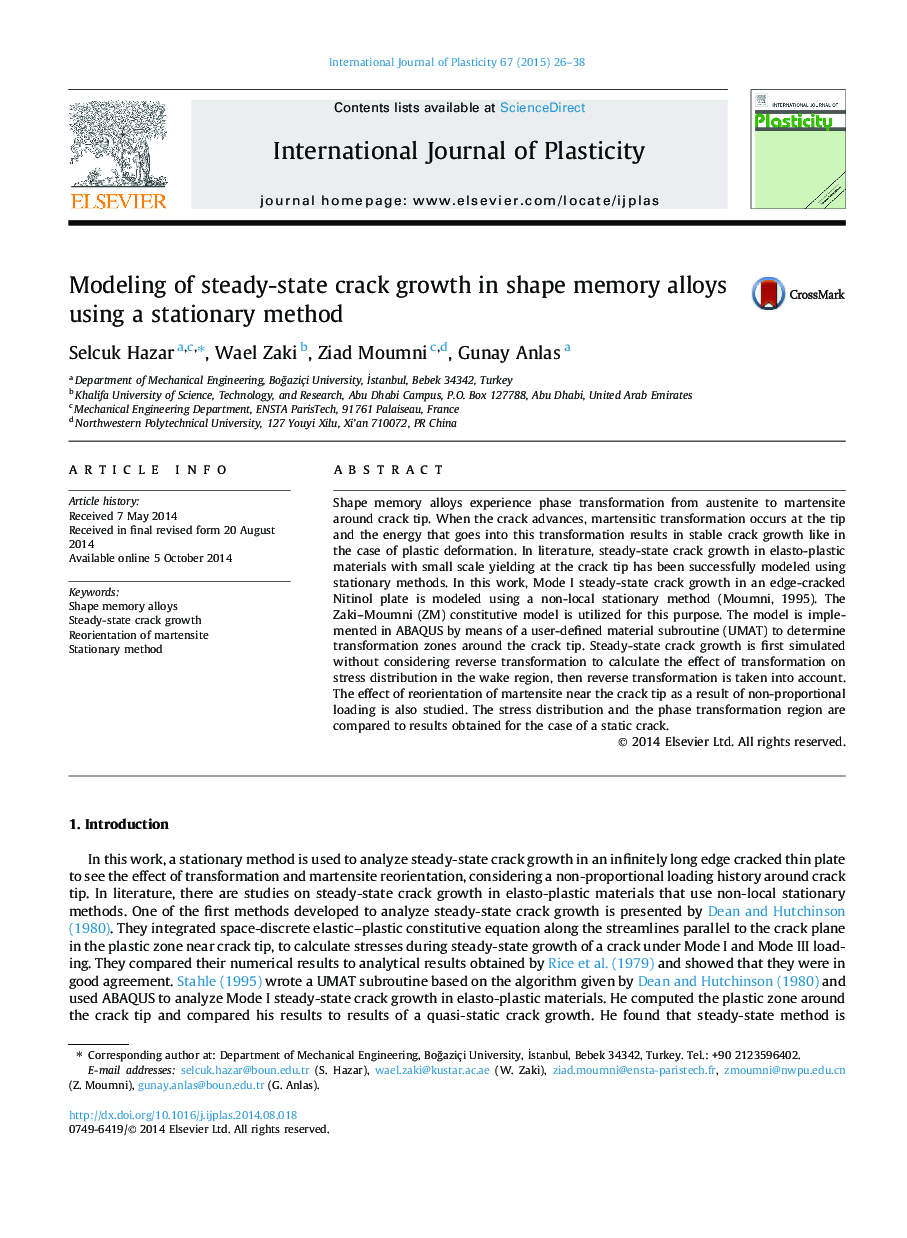| Article ID | Journal | Published Year | Pages | File Type |
|---|---|---|---|---|
| 789064 | International Journal of Plasticity | 2015 | 13 Pages |
•Steady-state crack growth in SMAs is modeled using a stationary method.•The model is integrated using a space discrete algorithm.•The influence of reverse transformation and martensite reorientation is investigated.•Comparison with the case of a static crack is provided.
Shape memory alloys experience phase transformation from austenite to martensite around crack tip. When the crack advances, martensitic transformation occurs at the tip and the energy that goes into this transformation results in stable crack growth like in the case of plastic deformation. In literature, steady-state crack growth in elasto-plastic materials with small scale yielding at the crack tip has been successfully modeled using stationary methods. In this work, Mode I steady-state crack growth in an edge-cracked Nitinol plate is modeled using a non-local stationary method (Moumni, 1995). The Zaki–Moumni (ZM) constitutive model is utilized for this purpose. The model is implemented in ABAQUS by means of a user-defined material subroutine (UMAT) to determine transformation zones around the crack tip. Steady-state crack growth is first simulated without considering reverse transformation to calculate the effect of transformation on stress distribution in the wake region, then reverse transformation is taken into account. The effect of reorientation of martensite near the crack tip as a result of non-proportional loading is also studied. The stress distribution and the phase transformation region are compared to results obtained for the case of a static crack.
